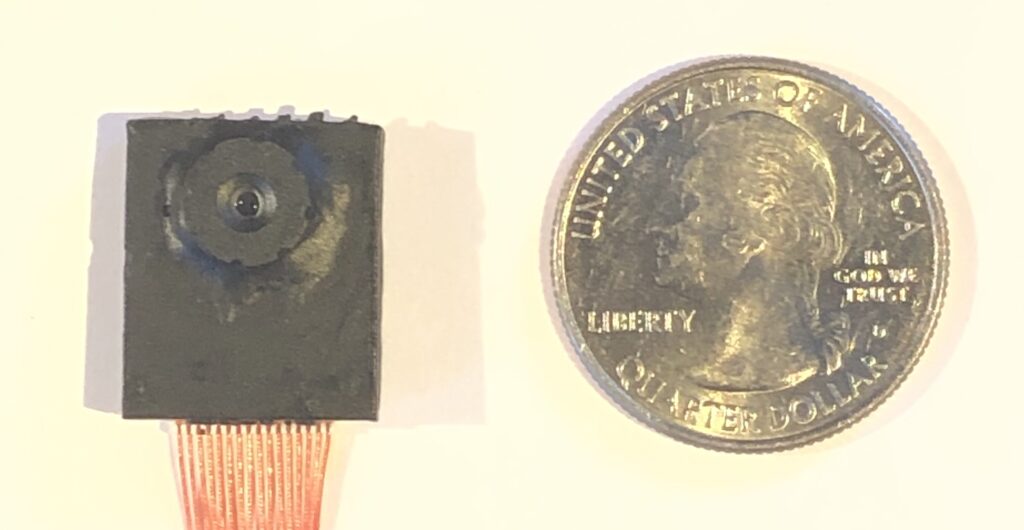

To complement our low-SWAP integrated sensors, we are launching a new family of “modular sensors”. These vision sensors are for applications in which flexibility and modularity are important and one is willing to tolerate a few extra grams to achieve this modularity. Currently we are producing two variations- a monocular version primarily for optical flow and related sensing, and a binocular version to additionally support stereo vision sensing. These sensors can be used as evaluation or developmental boards for customers who may be later interested in our low-SWAP integrated sensors. Although a new family of devices, these sensors have both Centeye’s integrated sensors and our old ArduEye product line as lineage. The characteristics of this sensor family are as follows:
Tight analog pathway: Each vision chip has it’s own dedicated low-noise linear voltage regulator and 16-bit analog to digital converter. The analog pathway draws inspiration from the design of audiophile equipment design to produce the best quality image possible.
On-board EEPROM with calibration information: Each board has it’s own EEPROM with calibration information, including fixed pattern noise compensation and, for the the stereo sensor, relative pixel displacements for each corresponding pixel pair.
Processor agnostic: These boards do not include a processor. Instead, each board is designed to work any customer-supplied processor, whether an 8-bit Arduino or an advanced GPU. For in-house development we are currently using a Teensy 4.0.
Shared source code: We are providing source code for image processing and interface algorithms on a “shared under NDA” basis. This is part to provide transparency to algorithm operation and part to allow the customer to adapt the design to their use case.
Easily modifiable design: The circuit topology and board designs can be easily modified for different use cases. The board itself uses a 4-layer design which will make it easy to adapt the design for a particular use case.
We are currently producing these boards in small quantities for select customers. Please contact us for information.